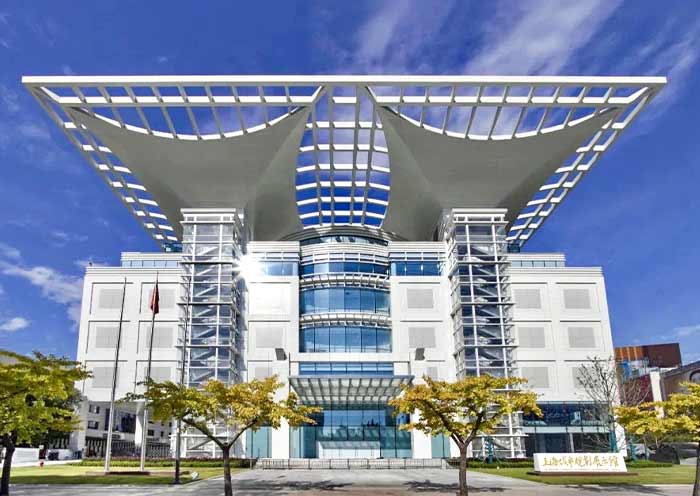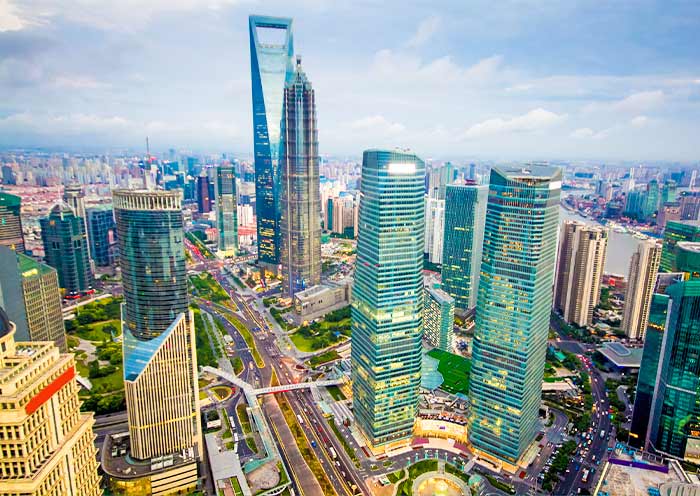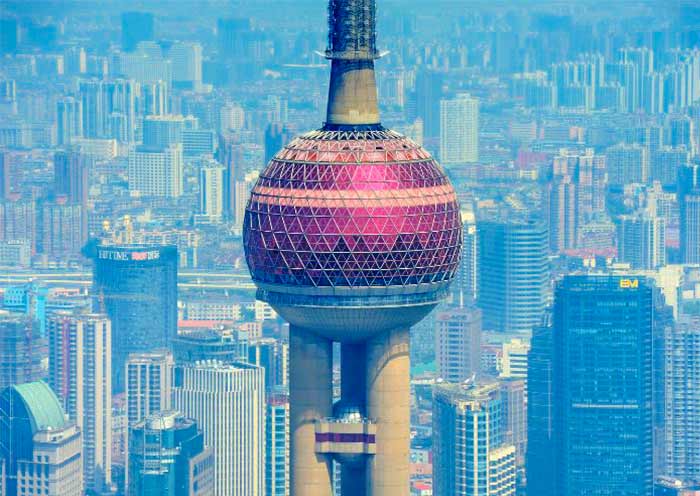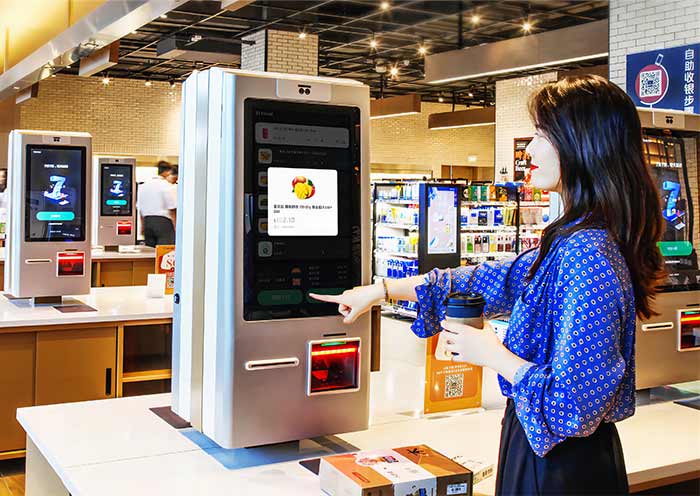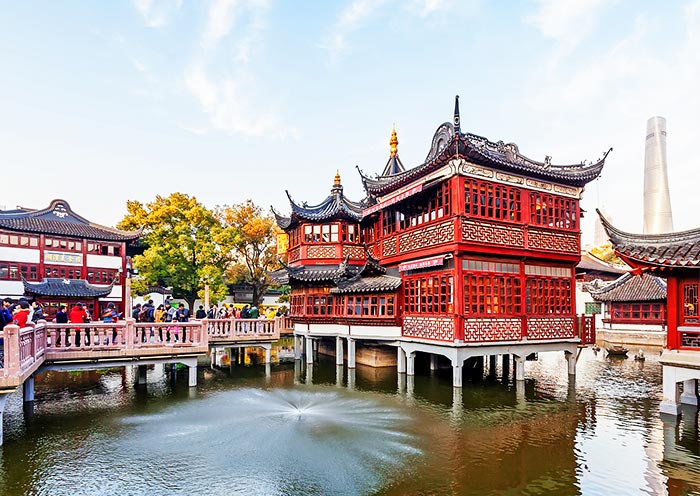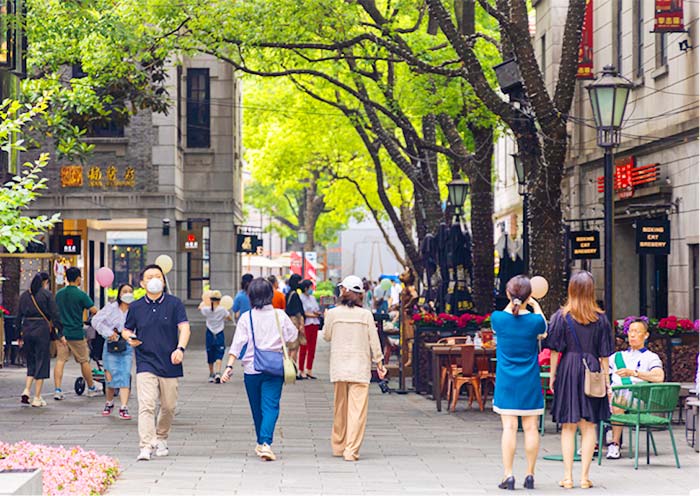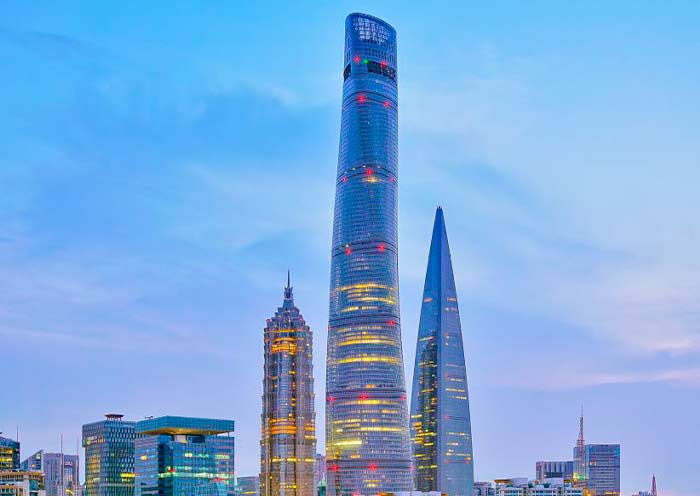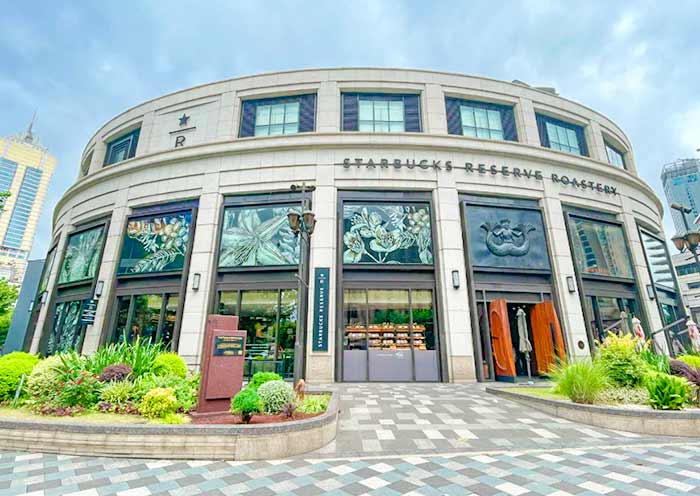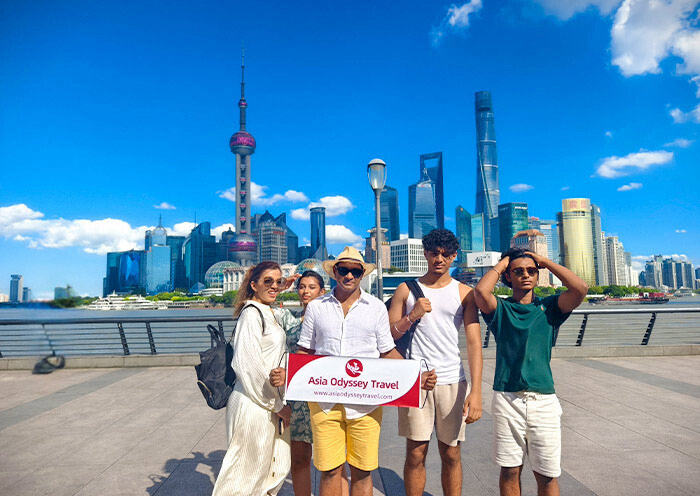In the morning, you will meet your guide early at the appointed time in your hotel lobby and be ready to introduce Shanghai to you. Your first stop will be at the Shanghai Urban Planning Exhibition Center. Located in the city center, this modern museum provides an excellent introduction to Shanghai's rapid transformation from a small port town to a global metropolis. Set over five levels, it is divided into four main theme halls: "Entrance Hall", "City of Culture," "City of Innovation," "City of Ecology," and the multimedia display hall on the fifth floor. After more than a year of renovation, the museum now features cutting-edge technology such as VR, AR, holographic imaging, and a 5D digital urban sandbox, allowing you to immerse yourself in the past, present, and future of Shanghai.
The 1st floor features a panoramic screen that showcases "Impressions of Shanghai". The west side shows Shanghai's six rounds of master urban planning since 1931. Entering the 2nd floor, you'll encounter intricate and detailed models that represent various facets of Shanghai, including its urban fabric, architectural style, and 15-minute community life circles, each worth a closer look. You can also engage with AR experiences via iPads. Additionally, a "City Laboratory" allows visitors to role-play as urban planners and see the simulation effect of planning intuitively, offering an educational and interactive chance to learn urban planning. The 3rd floor is filled with a sense of technology and the future. The highlight here is the 5D immersive digital sandbox. You can choose different city districts or use a joystick to "roam" around the city blocks, feeling as if you're flying. Step into the 4th floor, a blue "river" flows from west to east on the ground. Sturgeons and crabs are just beneath your feet. The sand table demonstrates the process of Shanghai's land formation from 20,000 to 2,000 years ago. If you need a break, the M floor features a creative zone, reading area, and coffee shop. Enjoy a warm cup of coffee while sitting in front of the floor-to-ceiling windows, taking in the beauty of the city.
After your illuminating exploration, you will gain an invaluable understanding of the city's architecture and development. Then, it's time to witness the real buildings. Your journey will take you back to Shanghai's Old Town. Here, you will wander through Yu Garden, which is one of the nation's best examples of traditional Chinese gardens. Yu Garden (Yuyuan Garden豫园) was a private garden of the Ming Dynasty (1368-1644) with a history of over 460 years. As you wander through, you'll encounter various "scenes", exquisite pavilions, intricate rockeries, tranquil koi ponds, and lush vegetation come together in a harmonious blend. The Yu Garden embodies the harmonious principles of classical Chinese garden design. It is an essential stop for anyone interested in traditional Chinese culture and architectural aesthetics. Yuyuan Bazaar (Chenghuangmiao Bazaar豫园商城/城隍庙小吃街) outside Yu Garden is a vibrant Shanghai Old Street where you can try Shanghai’s local snacks such as Xiaolongbao (Nánxiáng Steamed Bun Restaurant小笼包), Pan-Fried Pork Buns (Fried Dumplings生煎包), Soup Dumplings (灌汤包), and Won-ton Soup (上海馄饨).
After lunch, take a public ferry like a local to cross the Huangpu River and slowly travel from old Shanghai to Shanghai's Pudong New Area. Pudong serves as a stark contrast to the historical and architectural style you'd find in areas like Shanghai's Old Town and the Bund. It's a testament to China's rapid economic development and a symbol of modern China, complete with towering skyscrapers, international companies, and an advanced infrastructure. One of the most eye-catching features in Pudong is the trio of towering skyscrapers in the Lujiazui financial district. Shanghai Tower is the tallest building in China and the second tallest in the world, reaching up to 632 meters (2,073 feet). Shanghai World Financial Center is the third tallest building in China and the fifth tallest in the world, reaching up to 493 meters (618 feet). Jin Mao Tower combines elements of a traditional Chinese pagoda-like structure with a modern style at 421 meters (1,380 feet). Locals affectionately refer to the three skyscrapers as the "Kitchen Three Piece Set" ("厨房三件套") due to their shapes resembling common kitchen gadgets: a syringe, bottle opener, and eggbeater, respectively. Here, you will ascend the highest building in Shanghai - the Shanghai Tower, which features a dramatic 120-degree twist from its base to its peak. Take the world's fastest lifts (traveling at 64km/h) to the "Top of Shanghai Observatory" located on the 118th floor, 546 meters (about 1,791 feet) above ground level. Here, you'll have the unparalleled opportunity to enjoy a 360-degree panoramic view of the city and also look down upon the Jin Mao Tower and the Shanghai World Financial Center.
Next, you will be taken to the foot of another iconic tower - Oriental Pearl Tower - 468 meters (1,536 feet) tall, especially notable for its unique beaded design. The structure is composed of 11 spheres (or "pearls") of varying sizes, which are "strung" vertically along three enormous columns that serve as the tower's main supports. The design draws inspiration from a line in a Chinese poem: "大珠小珠落玉盘" ("Big beads and small beads fall onto a jade plate"), capturing the essence of a string of pearls dropping onto a jade plate.
Your final stop on this day is the Bund (also called Waitan). As you walk along the Bund, the architectural tapestry of the city unfolds before you. On one side, you have the historic buildings - vestiges of Shanghai's past as a center for international trade and finance. Then, as you look across the Huangpu River, you encounter a vision from a science fiction tale—the shimmering skyscrapers of Pudong that you've just visited. The contrast could not be starker, or more symbolic of the city's journey from a small port to a modern metropolis.







